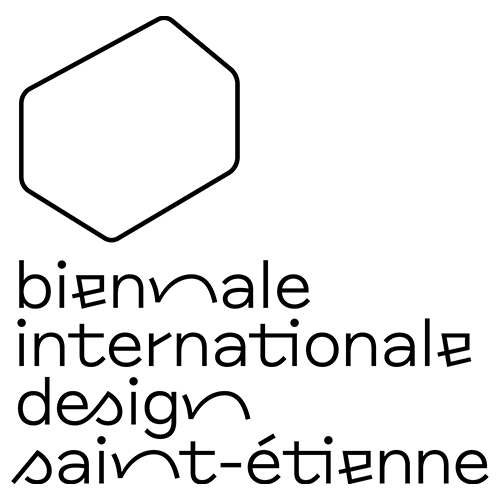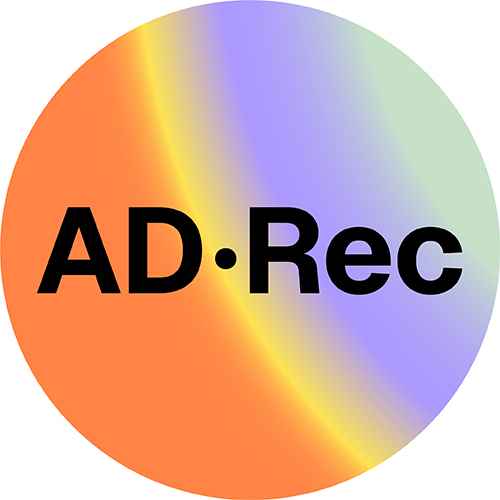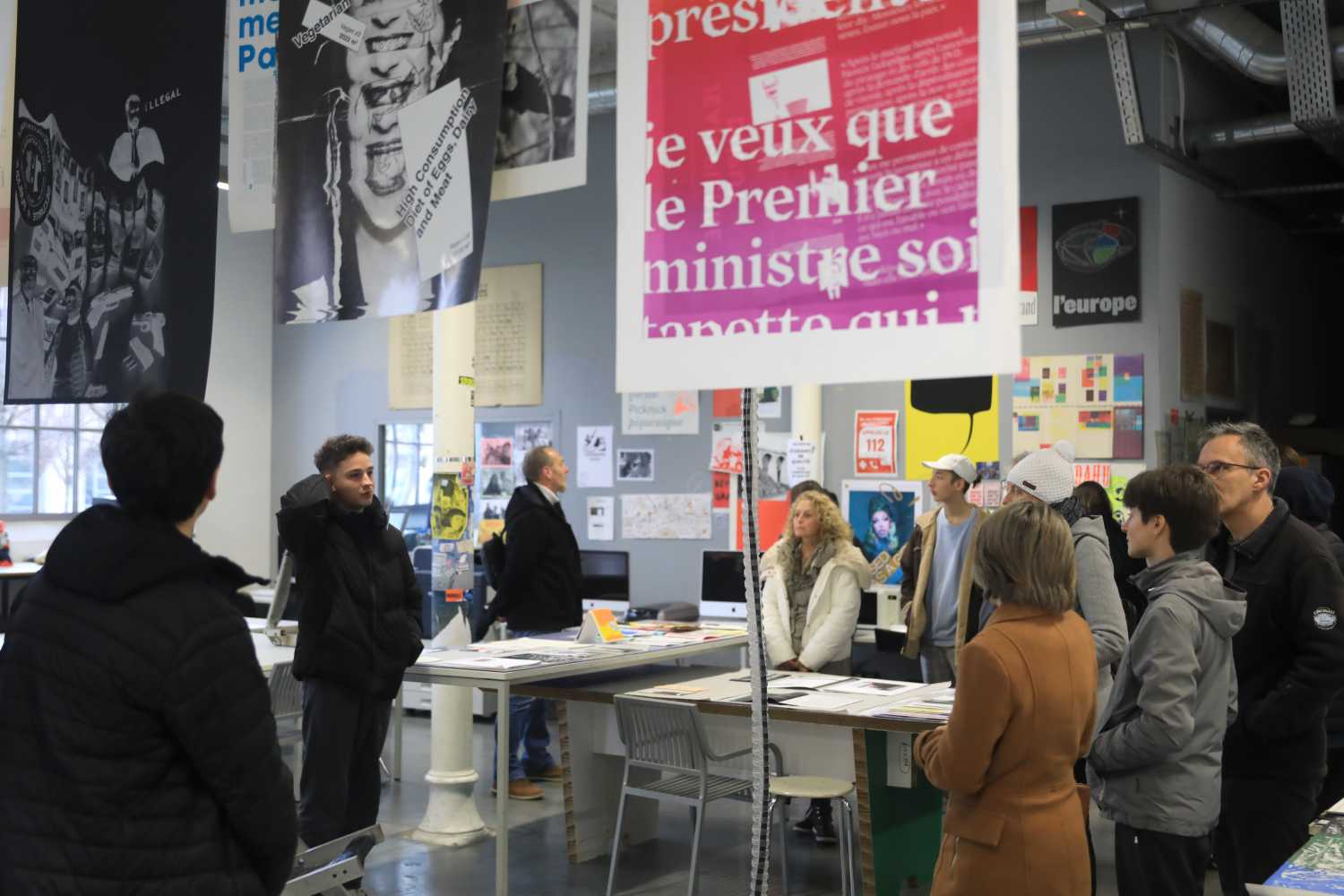Version française
Faire, encore [Making, Still making], the Art Design Recherche (AD•REC) 2025 conference, will take place at the École supérieure d’art et design de Saint-Étienne (Esadse) at the Cité du design during the 13th edition of the Biennale Internationale Design Saint-Etienne, entitled: Ressource(s), présager demain.
It has two components: a colloquium to be held on May 27 and 28, 2025, and an exhibition.
The call for participation is open to submissions on the ScienceConf platform until December 20, 2024.
Please note: we are extending the deadline to January 6, 2025!

Thought is always about experimenting, not interpreting, but experimenting, and experimentation is always about the current, the nascent, the new, what is happening now.
An invitation to pool research work that is probing the "ways of doing and making" prevalent in contemporary creation
The AD•Rec 2025 conference is principally aimed at artist and designer researchers teaching in art and design schools. It is an invitation to pool research work that is probing the "ways of doing and making" prevalent in contemporary creation, by looking at bothpractices (creative research) and theoretical studies. How can creative practices actively enhance living environments? Do art and design currently describe those environments? Do they contribute to preserving and perpetuating them? The research discussion we are preparing starts from the hypothesis that creatives have a role in to play in designing the transformations in societies, in particular those working out of art and design schools and thanks to the expression of their students’ creativity.
At the beginning of this decade, we were given a taste of "doing nothing" when the movement of people and goods was suspended and the combustion of fossil fuels curbed by the pandemic. This fleeting interlude rekindled the idea that unappealing futures – which are already invading our present – might be replaced by imaginative alternatives. Multiple, fragmentary, collective, cautious or adventurous, propositional and forward-looking ways of doing and making are being embraced in art and design schools, creating a genuine research community, which this conference will seek to represent, interpret and promote.
At a time when the weight of human constructions has now exceeded the weight of the biomass on the earth’s surface, how can we decide what we have the right to "still do", in spite of everything? It is vital to limit the artefacts that weigh on the planet. But the human appetite for significant and beautiful objects is not going to go away. Creativity has a place apart from industry and can be conceived as a non-harmful mode of action. So where do things stand?
The research being done in art and design schools offers a rich panorama of attempts to invent modes of action through the creative process. In this it is wholly in line with the students’ hopes and expectations. They inhabit living environments marked by geopolitical iniquity and climate injustice. They are experimenting with the first stages of uninhabitability: temperatures of 50° in our cities, water shortages, devastating floods, the sixth mass extinction. They feel the urgent need to imagine as yet unknown ways of doing and making, living and being, and they are using every medium – plastic, pictorial, graphic, digital, visual – to do so. This is leading to discoveries of other ways of doing and making things, elsewhere and with unexpected creative partners. Notions like care and frugality, a restored relationship with the living world, gender studies, ecofeminism and decolonial studies have converged. A part of creative efforts now seems to be directed towards attempts to regenerate living environments.
The conference itself will be accompanied by an exhibition. This will be a research exhibition. That is to say that it will aimto show and share the "doing" part of research. How do we do researchthrough a creative process? How do we act through that research? How do weshare that research? Four cross-cutting themes relevant to different areas ofcreativity and research will be addressed.
Thematic Axes
Are artists and designers creating the conditions for themselves that they need to create new forms in a world saturated with objects? Can we express those conditions in a formal way and give examples?
Even an overloaded world still needs new objects, which give meaning and its own aesthetics to an era. What ethical or technical rules do creatives set for themselves? What trade-offs are involved? Of course, here we are thinking of compliance with environmental standards and practices like recycling, upcycling, material recovery, reduction of materials used, accountability and transparency in the use of materials, energy and infrastructure, ideas like low tech, open source, permacomputing and so on.
We are also seeing inspiration coming from a sense of the common good: the philosophy of the commons, respect for all life forms, a sensitivity to the notion of "territory" and the local, work on archives and a document-based creative process, recognition of vulnerabilities, condemnation of discrimination. Are these attitudes and practices the source of a particular type of aesthetics? Do they lead to renouncing certain things? What is the critical thinking about dependency on the industrial and economic environments, and the persistence of de facto dominations, the involuntary enlistment of invisible hands by the infrastructure of creative research creative at the very time when creativity is maturing criticism?
keywords: recycling, upcycling, recovery, reduction of materials,accountability, transparency, energy, infrastructure, code, algorithm, data,low tech, open source, commons, cooperation, common good, local, heritage,archives, documentation, vernacular knowledge, vulnerabilities, discrimination,domination, alterity, care.
In what ways does agency characterise creative work in the arts and design?
Acting through creation is not simply dependent on an artefact. We should look at the performative, symbolic, relational and political dimensions. The performativity of graphics, incorporated into routine behaviours, semiotically defines the uses of space and its intelligibility. That plays out in the expression of authority, for example the power of urban signage, or in resistance, with the manifest object, the activist performance, the critical scope and the counter-balancing force that an ephemeral architectural structure, a digital work or an image can constitute. Mere, non-functional inscription creates a symbolic territory and gives shape to the experience of others by rendering an inter-subjective presence that does not involve verbal language. Some artists are working on "non-doing" and "non-making". This is not "a nothing". It is an act. It posits non-doing as a refusal to fit into a world order that we disapprove of. It rearranges the "already done" and the "already there", be they archives or things. In addition, performative practices are directed. They act on the audience. How is their transformative power diffused? How are they re-appropriated, translated, circulated and turned into actions? Are performative forms a form of expression adapted to the state of the world as it is today? How does studying them enrich our understanding of the agency of creative work today, both generally and specifically?
Keywords: performativity, symbolic, agency, working, relations, political, artefact, manifesto, non-doing, non-making, arrangement, ephemeral, activism, signage, wander lines, sign, drawing, new utterables, invisible, unknown.
What the arts and design are doing to industry. What the new factories are doing to the arts and design.
What do the arts and design produce? What actual transformations do they bring about? Even as creative approaches are taking an interest in the social changes imposed by the depth of the transformation of life, industry is preparing to go in a different direction. By industry here we mean industrious human activity focused on the improvement of life. Within this meaning, we are thinking not only of factories, but also of micro-factories, farms, craft collectives, etc. What intermediation or instigation roles are those working in the arts, design and architecture playing in the re-invention of people’s social lives, daily lives, working lives, and that of industrial, scientific and craft activities?
We may think of objects, processes and infrastructure that meet new needs, markets and standards, of the speculative and imaginative contributions of artists and designers working in laboratories, residencies and incubators, including those working in the rural world and with significant otherness.
In what directions are alternative production systems evolving? What impact do these areas of activity have on the trajectories of designers and artists? Is there research in progress on new professions and skills? Does the experience of given environments steer artists and designers towards technological, biotechnological, ecological, historical and anthropological research, or just as much towards activism?
Keywords: living environments, industries, redirection, changes, transformations, intermediation, effectiveness, crafts, micro-factories, farms, rural world, significant otherness, residencies, incubators, objects, processes, infrastructure, laboratories, imagination, trajectories, professions.
By theoretical infrastructures we mean the contribution of historical knowledge and philosophical thinking to our reflection on fabrication (technical) and on agency (transformative). How is aesthetic, architectural or technical theory interpreted in art and design schools? In our teaching do we manage to go beyond a quest for references and models that maybe exposed to the pitfalls of analogy? Probably. How then, drawing on this, can we characterise contemporary ways of doing and making? Are they more pluralistic, decentralised because of it? Can we therefore help to measure whether the current historic environment makes them singular? Symmetrically, we may ask ourselves whether these contemporary ways of doing and making provide avenues for renewing aesthetics and the field of Arts and Industries.
The conference would also been riched by contributions that look at interdisciplinary combinations, for example with materials science, the life sciences, ecological science, earthsciences, anthropology, political science and critical studies of colonialism and gender studies in this first quarter of the 21st century. In a historical approach, studies concerning the contributions of art and design interventions in the criticism of industry, aesthetics and formal research are also expected. How to interpret – and reuse to our best advantage – what we have drawn from different movements, groups and schools to make something for the present, even as our specific environmental circumstances preclude simple analogies or the seeking out of models? Finally, to what extent is there a dialogue between the schools, or, in the context of research events and exhibitions, between research teams and students?
Keywords: critical theory, future, utopias, speculation, societies, theoretical learning,perspectives.
Key Dates
- December 16, 2024 from 1 p.m. to 2 p.m.: Q&A webinar (Teams, ID : 319 150 396 401 / Code : ig8BGB)
- December 20, 2024 : deadline for the call for submission of the anonymised paper proposal and the project description for the exhibition; closing of the Sciencesconf platform.
- February 12, 2025: notifications(acceptance or rejection) and comments on double-blind expert reviews will be accessible on the platform.
- March 5, 2025: deadline for reception of the final proposal.
- March 28, 2025: deadline for at least one of the authors to register for the conference and deadline for reception at the Cité du design of exhibited works and images to be printed.
- May 22, 2025: opening of the Faire, encore exhibition as part of the 13th Biennale Internationale Design St-Etienne (22 May to 6 July 2025) on the theme: Ressource(s), présager demain.
- May 27-28, 2025: AD•Rec 2025 Faire, encore colloquium.
- July 6, 2025 : closing of the exhibition and closing of the biennial.
Link to the Call for Proposals on SciencesConf
You’ll find all the documents relating to the call for participation on SciencesConf. You will also submit your proposals for papers and projects for the exhibition via this platform.
SciencesConf AD•Rec 2025 : Faire, encore
Please adress your questions to: adrec.bid2025@esadse.fr
Scientific Commitee
Armand Behard (ENSCI, Paris)
Gwenaëlle Bertrand (UJM, Saint-Étienne)
Nicolas Bourriaud
Claire Brunet (ENS, Paris-Saclay)
Indiana Collet Barquero (Esad, Limoges)
Dominique Cunin (Esad, Valence et ENSAD Lab, Paris)
Rodolphe Dogniaux (Esadse, Saint-Étienne)
Davide Fornari (ECAL, Lausanne)
Sylvia Fredriksson (Esad, Orléans)
Sylvain Gouraud (ESADHar, Le Havre)
Claire Jacquet (EESAB, Bretagne)
Émilie Perotto (Esadse, Saint-Étienne)
Océane Ragoucy (ENSA, Paris-Malaquais)
Noémie Sauve (Esad TALM, Le Mans)
Emmanuel Tibloux (ENSAD, Paris)
Antonella Tufano (Université Panthéon-Sorbonne, Paris 1)
Pierre Lévy (CNAM, Paris)
Géraldine Longueville (ÉESI, Poitiers)










Détournement et économie des ressources : la création numérique comme manière de jouer avec les contraintes

Votre navigateur est obsolète, l’affichage des contenus n’est pas garanti.
Veuillez effectuer une mise à jour.